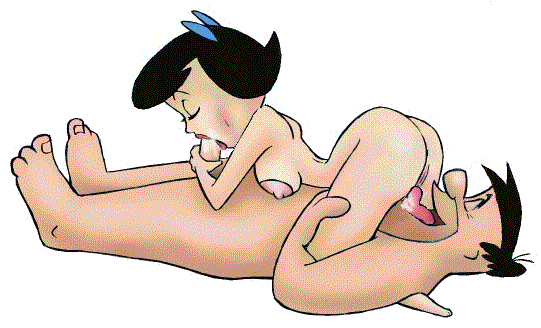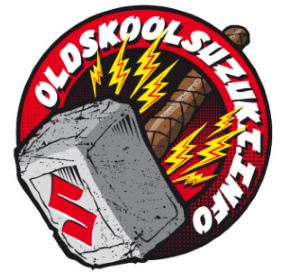-
Posts
5,758 -
Joined
-
Last visited
Content Type
Profiles
Forums
Events
Everything posted by Gixer1460
-
Bandit 6 = tappet head? and 1100M shim head, so its a bit more work than just sprockets as the cam shafts are completely different. Lot of work for no appreciable gain IMO!
-
Never seen stock figures published I suppose most rely on the stamped timing marks - these work well enough. As regard actual degrees with std. cams & adjustable wheels - 110 degs on both works for me in most cases.
- 7 replies
-
- lobe center
- degreeing
-
(and 2 more)
Tagged with:
-
I believe the shells were from a Kwak ? Its hard enough to find someone to line bore cam caps, even harder to find someone to overbore them, modify the caps and bearings and fit them - not saying impossible just V. spendy!
-
Not surprised - you've used one piston, in an un-restrained block and heated it 'uniformly'. Done this way the cylinders can move around and all of the piston is heated whereas when operating, its primary heat source is only through the crown so the skirt should be somewhat less and maintain its clearances. I'm guessing it's why IC engines are only 30 - 40% efficient - too much mechanical drag!
-
There are larger Eaton units - M90's that were fitted to big Jag's. I had a couple and had plans for fitting one to a 1186 engine but the drive train would potentially sap so much power I wouldn't get much more power than the T2 turbo fitted at the time so project got shelved! Also getting the drive out of an oil cooled engine isn't easy if you don't want leaks - air cooled sooooo much easier! Going back to a point above about 'big gobs of torque at low rpm's' - yes there is more torque available at low rpm but its not excessive. It should be proportional to throttle opening and more akin to riding a bike with a big bore / capacity hike that just keeps building capacity! A positive displacement supercharger can be undergeared to lower the torque curve so building boost later and less overall - but that's not fun. The real problem IMO is the difficulty of incorporating an intercooler, same as with a draw through turbo - they both need them but don't have the real estate!
-
Standard cooler tabs have rubber isolators in the slots - engine and road vibrations can fracture tabs and possibly that aluminium ? bracket - is it 3mm?
-
Well, for correct running you need 3 things - Sparks, Air and fuel. The first two seem to be covered, so even though carbs are 'clean' it would seem there is a blockage somewhere? If the alternative carb rack work correctly then its carb strip time again! DJ kits do wear especially needles and emulsion tubes but have a lifetime warranty so can be replaced but at idle / low speed when starting would be start / idle circuits needing investigation - but you do have some direction now!
- 18 replies
-
- gsx1100
- suzuki gsx1100
-
(and 2 more)
Tagged with:
-
As Busa barrels are nikasil coated aluminium the ring clearances are liable to be tighter as barrels will expand at similar rate to pistons. Clearances in a Steel barrel should be as for the GSXR - piston to cylinder clearance - 0.05 - 0.06mm, Ring end gap (installed) - Top ring 0.2 - 0.35mm, 2nd ring 0.35 - 0.50mm
-
Don't follow a part diagram to establish lead placement - all engines running wasted spark run coil 1 to cyl's 1 & 4 and coil 2 to cyl's 2&3. Coil resistance quoted is too low - should be between 3 - 5 ohms NOT 1.8! At that resistance its drawing too many amps and would probably break down with overheating?
- 18 replies
-
- gsx1100
- suzuki gsx1100
-
(and 2 more)
Tagged with:
-
Then you'll have to sacrifice one and grind it thinner then measure with a micrometer and work out gaps or purchase the thinnest shim from suzuki parts and do the calcs. The latter is what I did when I got a M head with no shims at all! If you use the grinder, obviously don't use that one - its scrap!
-
Just looking at that picture tells you it has NOT got a starter solenoid built in - all wires that can be seen won't carry more than about 20A. It may have a starter circuit to trigger an external solenoid that sits between the battery and the starter.
-
You've been lucky then as most people have problems - generally slippage and / or dragging!
-
Hope you've got the right size - there are two.......ask me how I found that out LOL!
-
The point is there are far more fragile things than the tee's ie. the floats or the carb tops! And contrary to your statement 'floats have pressure inside' - they do not - just atmospheric from when they were moulded and so they have to cope with external atmospheric air pressure plus boost pressure.
-
Ordinary normal fuel pipe is fine and the tee pieces will survive considerably more pressure than you will be throwing at them! You don't appear worried about the plastic floats being crushed so why the tee's in particular?
-
stick a potato in your exhaust and see how much it affects the inlet ! My point was exhaust backpressure (usually greater in 4-2 systems) will necessitate lower jet #'s as cylinders will not be able to evacuate burnt gases as efficiently and conversely intake charge. Drag engines don't run silencers / mufflers for the sound - it's the easiest way of ensuring cylinders are empty for new charge.
-
Ball park 138 - 145, if you read my bit above - still don't mean its going to run right!
-
A 4-2 is quite restrictive compared to a 4-1 therefore if it gets out quicker it also gets in faster and would automatically get leaner so usually 10-15% up jet is a starting point.
-
Doesn't fit UK supplied bikes and so I would assume yours also, based on your avatar?
-
I thought Dan Wagner's motor was GSX based with FBG dry billet block and a Ward cylinder head? I guess there is the cost against stroker engines but I think mine could go another 1mm on stroke and 1 or 2mm on bore so well into the 1500's LOL! Woody certainly flogged Seans 1460 and broke everything else but the crank so they can be strong. As regards weight - yes they do weigh a bit more but as they are 'one off's' weight can be pared off some areas and added to strengthen other areas. As regards mine, it got Carrillo rods and Cosworth pistons for turbo use, so it all balanced out and uses lower piston speed / rpm's, and the extra wasn't an issue.
-
Just had a quick look through my printed APE catalogue and they say 1277cc / 83mm can be done in a Big Bore liner in stock block casting (not recommended though) but 85 and 86mm bore sizes need the Big Bore cylinder as well. Trying to find one of those these days is really hard but they are very stealthy !
-
Not sure that it can be done - GSF liners are the biggest OD liners that will fit oil cooled barrels without leaving the barrel casting paper thin, hence why the 'overbore' barrels were created, to accept a liner capable of taking a 86mm piston for 1371cc. To go bigger needs a stroke job - oooh nurse! Usually drag racers are the most 'creative' when creating frankenstein capacity hikes but no one i've heard or read about has gone over 1371 - 87mm pistons would just be over 1402cc but no one as achieved it AFAIK! Its maybe why the oil cooled engines have never really been exploited in drag racing when the GSX aircooled motors can go out to 1800+ cc!
-

GSX 1100 katana max cc on standard block
Gixer1460 replied to Screwriverracing's topic in Air Cooled
Everyone seems intent on big holes for the pistons but forgets about the even bigger holes in the cylinder block to hold the big liners - once you get that big there isn't much meat left in the block and in some cases the liners will break through to the fins. So you end up with thin liners (ie overbored) in a weakened barrel casting - No thanks, a gorilla block is much safer IMO! -
I wouldn't! All the wideband install notes i've seen / read do not advise putting the sensor pre turbo due to the heat & back-pressure. I have one fitted there but its a sacrificial narrow band so I don't care - the WB is after though!


